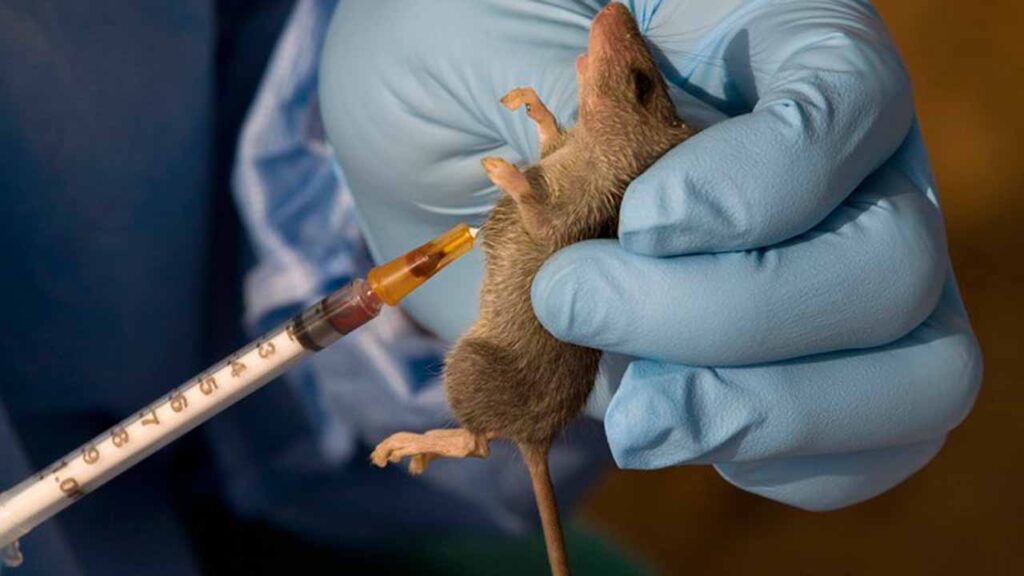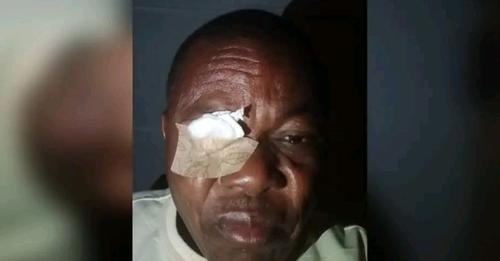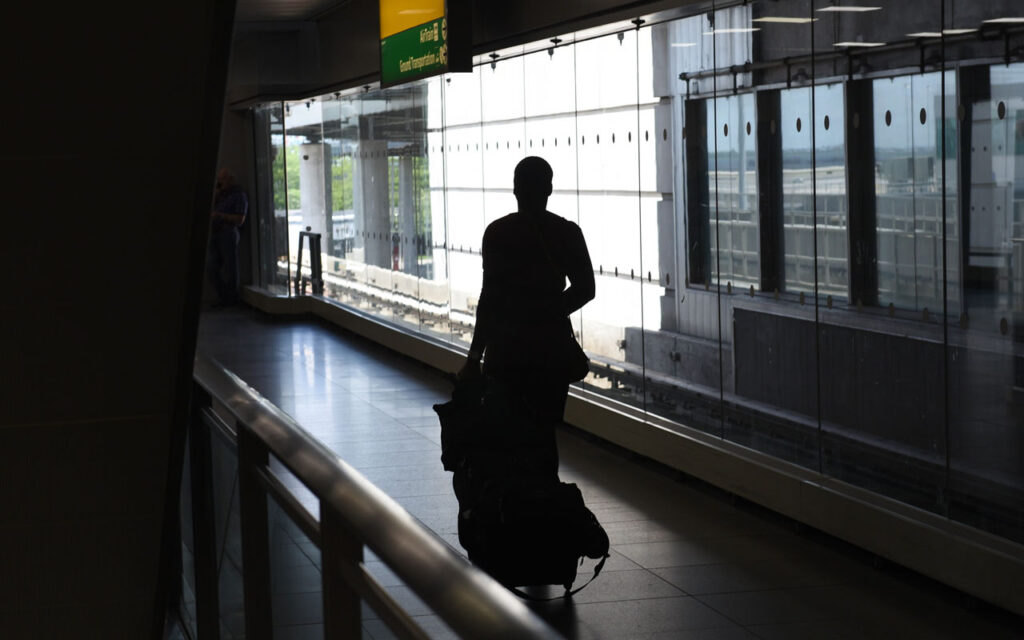 Continued spread of Lassa fever in the country has raised concerns among stakeholders on measures to contain it, citing the need to intensify campaigns about personal and environmental hygiene.
Continued spread of Lassa fever in the country has raised concerns among stakeholders on measures to contain it, citing the need to intensify campaigns about personal and environmental hygiene.
Lassa fever is an acute viral haemorrhagic fever (VHF) caused by the Lassa virus. The natural host organism for the virus is the Mastomys natalenced rodent (commonly known as the multimammate rat or the African rat) but other rodents can also be carriers of the virus.
The virus spreads through direct contact with droppings, urine, faeces, saliva, or blood from the infected rats, contact with objects, household items, and surfaces contaminated with these droppings and by consuming food or water contaminated with these droppings among others.
Person-to-person transmission can also occur through direct contact with an infected person’s blood, urine, faeces, vomits, and other body fluids.
Lassa fever is endemic in Nigeria and the annual peak of Lassa fever cases is typically observed during the dry season (December–April). Thus, infections are expected to rise further until the end of the dry season.
The disease is fatal, and around 15 to 20 percent of all hospitalizations for the disease ends in death.
According to Nigeria Centre for Disease prevention and control (NCDC), the country has continued to record a steady increase in states reporting Lassa fever for reasons not limited to improved surveillance, better community awareness, environmental degradation from climate change and other deleterious human activities in the environment.
For instance, in 2021, 510 confirmed cases were reported across 17 states and 68 Local Government Areas (LGAs). Whereas in 2022, Nigeria reported 1067 confirmed cases across 27 States and 112 LGAs. In 2023 alone, 28 states and 114 LGAs reported confirmed cases of Lassa fever and as of 3rd December 2023, there were 8542 suspected cases, 1170 confirmed cases, and 200 deaths (case fatality rate of 17.1%).
As of February 18, 2024 (end of week 7), 84 Local Government Areas in 23 states of the country have reported a total of 2,621 suspected cases, 476 confirmed, and 84 deaths with a case fatality rate of 18.6% including the health workers who lost their lives to this disease across the country.
71 percent of all confirmed Lassa fever cases were reported from three states of Ondo, Edo, and Bauchi while 29 percent were reported from 6 states with confirmed Lassa fever cases. Of the 71% confirmed cases, Ondo reported 25%, Edo 25%, and Bauchi 21%
The number of suspected cases increased compared to that reported for the same
period in 2023.
The disease initially presents like any other common illness accompanied by a fever, such as malaria. Other symptoms include headache, general body weakness, cough, nausea, vomiting, diarrhoea, muscle pains, chest pain, sore throat, and, in severe cases, bleeding from ears, eyes, nose, mouth, and other body openings (hence the name hemorrhagic). The time between infection and the appearance of symptoms of the disease (incubation period) is 3 to 21 days.
According to the World Health Organization (WHO), prevention of Lassa fever relies on promoting good “community hygiene” to control rat population and discourage rodents from entering homes.
In response to the rapidly increasing cases of Lassa fever in the country, NCDC through the National Lassa Fever Technical Working Group (LF-TWG) in January 2024 activated the national multisectoral Emergency Operations Centre for Lassa Fever (LF-EOC).
The LF-EOC activation resulted from a risk assessment conducted by subject matter experts from relevant Ministries, Departments, Agencies, stakeholders, and major partners. The outcome of the risk assessment placed the country at “High Risk” of increased risk of Lassa fever transmission and impact due increased number of states reporting cases, high case fatality in confirmed cases, low index of suspicion among health care workers and healthcare worker infections and deaths.
In a chat with The Guardian, the Director, Centre for Human and Zoonotic Virology, (CHAZVY) University of Lagos and Hospital Virologist, Lagos University Teaching Hospital, Idi-Araba, Lagos, Prof Sunday Omilabu who described as alarming, the rising cases of Lassa fever in the country, noted that the development implies that the rodents are within the households because the bushes are dry and we are now sharing our apartments with rodents that are looking for Food.
He said: “The surge is alarming, but this is the period we should expect more cases from October to early April. We are in the season, what it means is that the rodents are within the households because the bushes are dry and we are now sharing our apartments with rodents that are looking for Food. The transmission is through food and water contamination. In the dry season, we usually have a surge in the number of cases, what is missing out is that maybe people within the belt are relaxed. What it is telling us is that we have more rodents in houses and the rodents carry the virus in their blood, urine and their faeces, as the rodents eat our food, that is when they urinate and defaecate and all those body fluids carry the virus”.
Omilabu who stressed the need for Nigerians to keep to a hygienic lifestyle, warned that there are no drugs for Lassa fever and the only available one which is Ribavirin is not meant for haemorrhagic fever but has been the saving grace.
He lamented that people still dry their food items such as cassava, Garri and others by the roadside adding that the issue of drying Garri by the roadside is more worrisome considering that many Nigerians enjoy ‘soaking Garri’ during the hot period.
“Actually, the dry cassava, because they are still going to prepare it using hot water, that may allay our fear, but it is the already Garri that most of us will like to soak inside cold water in this dry and very hot period, that is how the thing gets to the high side. Most of the people who contract the virus must have gotten it through the soaking of Garri that has been contaminated with the virus. I enjoy soaking Garri but I make sure that my source of Garri is not from those displayed along the roadside or where they pack in sacks without monitoring to wade off rodents, in fact such a store actually breeds rodents because they have to look for food.
“Our public health officers need to go to the places they produce Garri and train them on how to package their Garri and prevent rodents from entering.
“The public education aspect of it, how many jingles are aired as recommended during the season? People should be kept on their toes to be aware and to know what to do and be wary of the possibility of housing rodents that transmit the virus, the need for them to cover their food items, and not allow rodents to hide in their houses. Another thing has to do with the level of awareness on the part of the healthcare facilities, not many doctors try to look into their books to be suspicious of Viral Hemorrhagic fever, we need to heighten our health education, just to educate our people that we are still in the season and this is just February, we have the whole of March and some part of April when we hope that the transmission will subside”.
He argued that with good personal and environmental hygiene, the country can curb the spread of Lassa fever because the vector is what we are taming, the moment we don’t allow the vector to thrive in our environment, there is no way we can come across the viruses, it is possible to eliminate Lassa fever where they have good rodent-control activities but in our clime, we don’t have the capacity to do that. In some endemic areas, they have bushes surrounding houses and it is through these bushes that the rodents enter the houses, carry some food products and go back to the bush and that is how they have been maintaining the source of the virus.
Speaking with journalists in Abuja, the new Director General of the Nigeria Centre for Disease prevention and Control (NCDC), Dr Jide Idris who described the statistics as unacceptable, urged Nigerians to practice good personal and hand hygiene by frequently washing hands with soap under running water or using hand sanitisers when necessary.
He also advised Nigerians to always keep your environment clean, block all holes in your house to prevent the entry of rats and other rodents, safely store food items in well-covered containers, avoid drying food stuff outside on the ground or roadside, where it is at risk of contamination.
Idris also stressed the need for people to visit the nearest health facility if they notice any of the signs and symptoms associated with Lassa fever, avoid self-medication to ensure proper diagnosis and early treatment as early identification and treatment of cases appear to be more effective and can save lives.
He said, “Eliminate rats in homes and communities by using rat traps and other appropriate and safe means discourage bush burning as this destroys the homes and food sources of rodents and drives them to migrate from the bushes to human residences to find food. Also cover your dust or waste bins and dispose of your refuse properly. Communities should set up dump sites far from their homes to reduce the chances of the entry of rodents into their homes”.
The Director-General who called on Healthcare workers to maintain a high index of suspicion for Lassa fever, told them to always practice standard infection prevention and control practices by using gloves, face masks, and other appropriate personal protective equipment while handling patients or providing care for an ill patient.
Idris urged healthcare providers to report all suspected cases of Lassa fever to their local government Disease Surveillance and Notification Officer to ensure prompt diagnosis, referral, and early commencement of public health actions.
He observed that the NCDC through the recently activated multi-sectoral multi-disciplinary Incident Management System has distributed of medical supplies for case management, infection prevention and control, laboratory diagnosis in all Lassa fever treatment centres in the country, built capacity of some healthcare workers across all the geopolitical zones on Lassa fever preparedness, readiness, and response through the pilot Lassa fever clinical management fellowship and also distributed Lassa fever social and behaviour change communication (SBC) materials to all the 36 states and FCT.
On the recent outbreak of Lassa fever in Kaduna State, Idris said, “NCDC was notified by the Kaduna State Ministry of Health of the report of deaths from suspected viral hemorrhagic fever at the 44 Nigerian Army Reference Hospital in Kaduna. Following this notification, the NCDC has been working with both institutions to conduct a comprehensive investigation of the suspected cases as well as ramp up response activities”.
“Four of the six blood samples from suspected cases sent to the Bayero University Teaching Hospital in Kano have been confirmed for Lassa fever. Furthermore, twenty-five close contacts of all these cases are now under follow up and placed on prophylactic medicine. The State Ministry of Health has also activated their Incident Management System with all the response pillars including intensified risk communication and community engagement for the prevention and control of Lassa fever in the affected communities”, he added.













